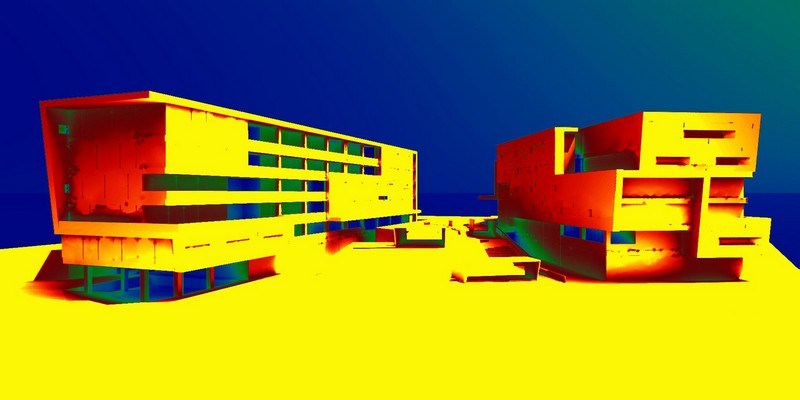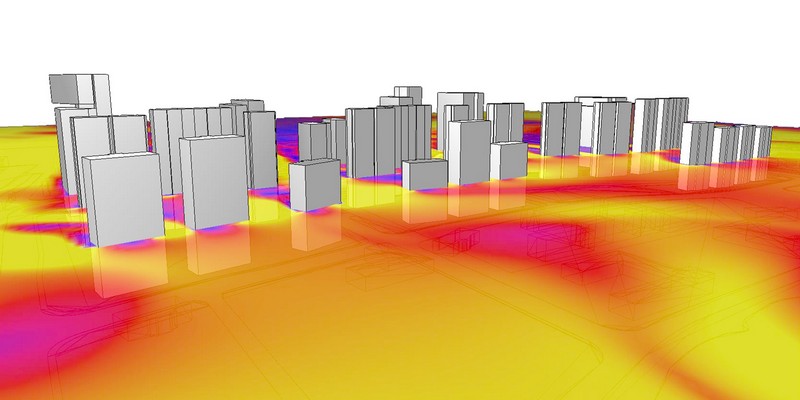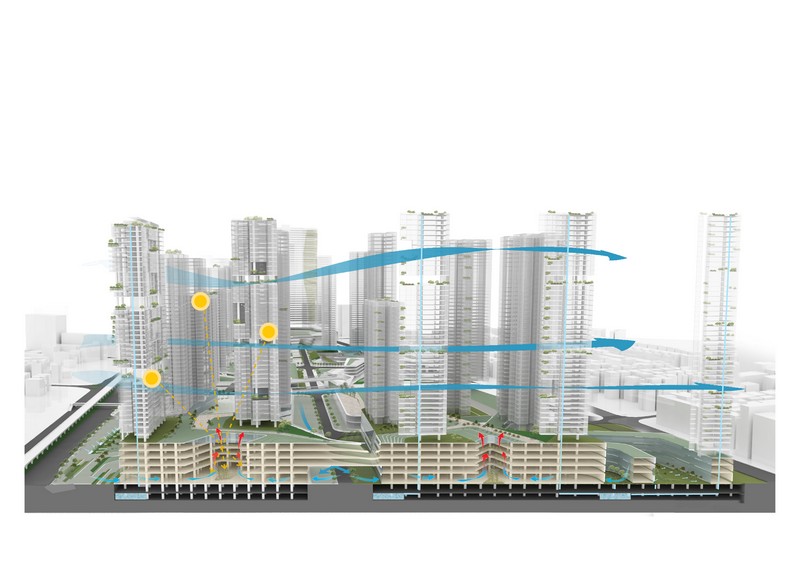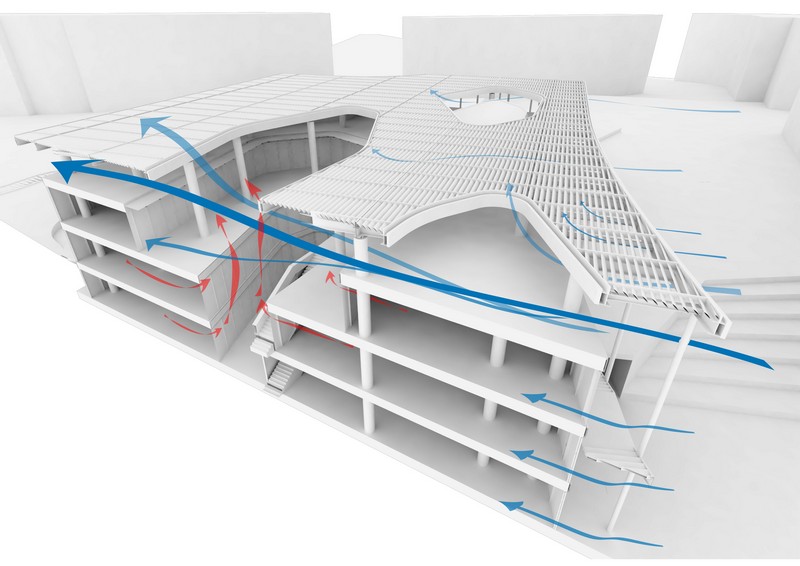Across Asia, urban development is expanding at an unprecedented pace. While a new city has not been founded in Europe for centuries and Las Vegas represents the most recent American city, Asia will see the creation of more than 20 new cities by 2050. By many accounts, it is expected that Asia will build the equivalent of the existing building stock of the United States five to ten times over. It’s incredibly exciting to see so much transformation in civilization while equally troubling to develop at this rate.
 The debate over the impact of the built environment on climate change has carried on for far too long. This is a simple question of math. It is not possible to continue the methods of the twentieth century: we would run out of raw materials, land area to maintain agriculture, all while deteriorating air quality. And then there is the question of energy: how to increase access for over a billion migrating to cities. These are families whose children are obtaining higher degrees of education, excelling at personal careers, and creating unique paths of life. New ambitions will inevitably increase demand. To confront such change, we have to think differently about development, design, and even living. It is a complex challenge, but it also poses the greatest opportunity to lead the twenty-first century.
The debate over the impact of the built environment on climate change has carried on for far too long. This is a simple question of math. It is not possible to continue the methods of the twentieth century: we would run out of raw materials, land area to maintain agriculture, all while deteriorating air quality. And then there is the question of energy: how to increase access for over a billion migrating to cities. These are families whose children are obtaining higher degrees of education, excelling at personal careers, and creating unique paths of life. New ambitions will inevitably increase demand. To confront such change, we have to think differently about development, design, and even living. It is a complex challenge, but it also poses the greatest opportunity to lead the twenty-first century.
 In the first two and a half years of 10’s practice, our team’s work has touched upon a combined land area of 12,000,000 square meters (equivalent to the size of the Central and Western district of Hong Kong). Designing new master plans throughout China, India, Malaysia, and Turkey, we recognize the incredible responsibility to get it right.
In the first two and a half years of 10’s practice, our team’s work has touched upon a combined land area of 12,000,000 square meters (equivalent to the size of the Central and Western district of Hong Kong). Designing new master plans throughout China, India, Malaysia, and Turkey, we recognize the incredible responsibility to get it right.
From the start of every project, design teams must research context and climate. International firms recruit talent from across the globe and it is rare that many team members have visited, let alone lived near the projects where they practice. Researching the historical conditions of a region, its climate and culture, provide opportunity to design in a responsive way, where environment drives form. Designs are tested to ensure cross ventilation, maximum daylight, thermal and energy efficiency. Each scheme develops through careful coordination of dynamic forms and natural opportunities. Design, examine, and reform; performance based design.
From master plans to buildings to individual spaces, these early decisions and goals can establish framework for the long term development and execution that ensures sustainability as an integral part of the project’s completion. The objective of architects needs to be the maximum pursuit of passive advantages from each project’s local climate and context with deep interaction with engineers and contractors to integrate their expertise.
 Over the past decade, the green building movement has promoted a principal message of designing buildings holistically. When the scale of projects extends to whole blocks, urban centres, and even cities, the opportunity to address issues beyond a single foundation allows a new kind of efficiency. The existing topography of site provides natural pathways for storm water and may distinguish areas for preservation, development, and resource use. In preparation for floods, the easiest way to achieve resiliency is to examine how existing habitats have dealt with these issues for centuries. Urban developments also provide the opportunity for district energy where a common network provides the means of combining the energy demands of many buildings to achieve economies of scale.
Over the past decade, the green building movement has promoted a principal message of designing buildings holistically. When the scale of projects extends to whole blocks, urban centres, and even cities, the opportunity to address issues beyond a single foundation allows a new kind of efficiency. The existing topography of site provides natural pathways for storm water and may distinguish areas for preservation, development, and resource use. In preparation for floods, the easiest way to achieve resiliency is to examine how existing habitats have dealt with these issues for centuries. Urban developments also provide the opportunity for district energy where a common network provides the means of combining the energy demands of many buildings to achieve economies of scale.
While passive solutions and responsive forms may reduce energy loads and resource use, the next step is to look at the active systems engaged in projects. This is an exciting next step: the research and development of new buildings methods, products, and systems. Some innovate on existing technology, while others are inspired by nature and intrinsic biological function and form. Our design teams have researched the feasibility of applying algae to buildings (no, not in a slimy way) as a means to improve insulation, generate energy on site, process carbon dioxide, and purify water. The goal is a living building with a positive loop cycle. We will always generate waste, but that waste should be beneficial.
 The majority of cities struggle with air quality as a result of automotive, building, and industrial emissions. While increased vegetation at the ground level and on roofs may reduce the urban heat island effect and improve air quality, our cities are tall, often “super-tall,” and middle stories are difficult to maintain. Partnering with research institutions and academic groups has led to increased applications for nano-coatings. Through photocatalytic conversions, these coatings shed liquid, dirt, and even process carbon dioxide.
The majority of cities struggle with air quality as a result of automotive, building, and industrial emissions. While increased vegetation at the ground level and on roofs may reduce the urban heat island effect and improve air quality, our cities are tall, often “super-tall,” and middle stories are difficult to maintain. Partnering with research institutions and academic groups has led to increased applications for nano-coatings. Through photocatalytic conversions, these coatings shed liquid, dirt, and even process carbon dioxide.
As architects, engineers, and builders, there is only so much that can be achieved during the design and construction of a new building. Once moved in, people drive energy use. Technically, designers can improve the performance of a building, but they cannot stop you from plugging in a fan, a heater, or that third blackberry. When energy is out of sight, it is out of mind. People care about what they can see, feel, and touch. The best driver to improve behaviour is through the direct interaction with the creation of energy and increasing consciousness of personal footprint. Piezoelectric pathways can literally illuminate one’s footprint as they walk across a campus, or a car driving over a bridge.
All energy is important. The maximum potential arises from the exploration of all renewable energy, and only after conserving as much as possible. The same applies to every natural resource, habitat, culture, and economy. The deepest solutions begin through careful examination and response; these passive strategies are most often free. When we push towards the more challenging goal of carbon neutral cities, greater investment is required. Leadership, research, and commitment towards a broad array of solutions will guide the path towards a true sustainable city. There lies the frontier for the pioneers of Asia.
Text: Sean Quinn
Images: 10 Design











